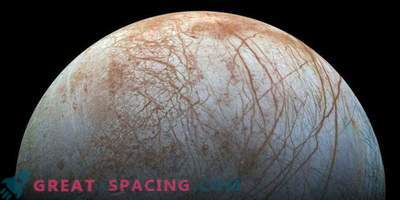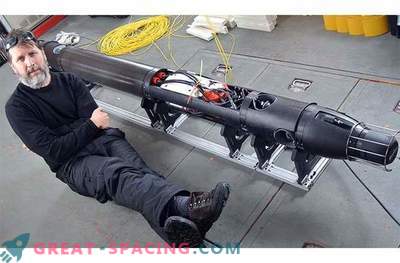
NASA reports that the selection of tools for the upcoming exploration of Jupiter’s satellite, Europe, has been completed. Selected nine research tools will answer the burning question: are there signs of life on this moon covered with icy ocean?
A set of instruments on board the spacecraft will include a movie camera, remote temperature meters, a radar with high penetrating power and a sample collector that can directly examine particles of matter from the under-ice ocean ejected into space.
As stated at a press conference held on Tuesday, May 26, NASA Administrator for Science John Grunsfeld (John Grunsfeld), one of the main questions of natural science today - is there life in the universe. And you need to start with the study of whether there is life in the solar system. Europe today is one of the areas where conditions seem suitable for the birth of life. This mission will be a step that will help us better understand the world around us and, perhaps, will indicate the habitability of the universe.
“If we find life, or signs of life, it will be a huge step forward in understanding our role in the universe. If there is life in the Solar System and in particular in Europe, then it can be found everywhere in our galaxy and in the whole Universe, ”he said.
Currently, NASA begins work on the preparation of a robotic spacecraft, the launch of which is scheduled for 2022. The flight will take more than 2, 5 years. It is planned that the ship will make at least 45 turns around the satellite of Jupiter. “It would be great if we could detect chlorophyll, the structure of which is similar to that created by terrestrial plants. But this is unlikely to happen. Mother Nature cannot be so good to us. It would be even better to find petrified bones protruding from the icy surface. But this, most likely, will not happen either. Finding evidence of the existence of life has many nuances, this is a very sensitive issue. And very difficult, ”- said the program supervisor Kurt Niebur (Curt Niebur).
The European Clipper (as the future ship is called) will be able to calculate the amount of ice covering the ocean, the amount of salt in the ocean and will try to determine if the organic matter contains brown lines covering the cracks in the ice surface. He can also take high-resolution photos and accurately measure the temperature at the surface. The obtained data will allow to assess whether there are niches on the planet that allow life to exist. For example, the species of living organisms known on earth.
The cost of a set of nine tools that scientists are going to send to Europe will cost about $ 100 million, which will be a small part of the $ 2 billion allocated to the mission. The choice was made among 33 different equipment options.























